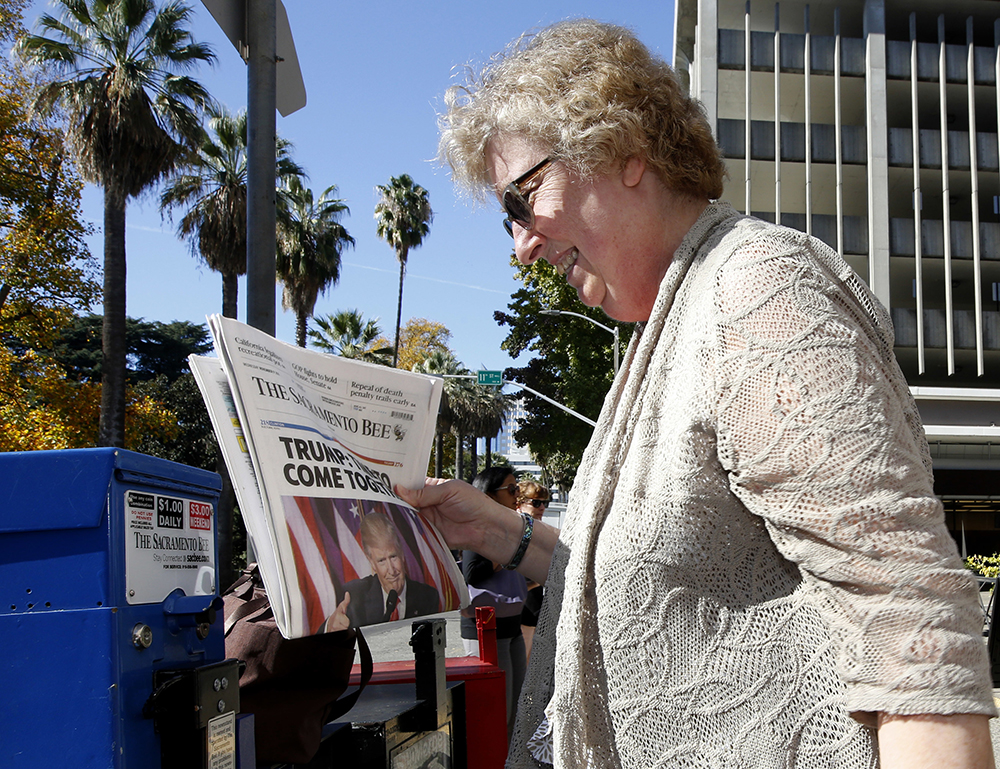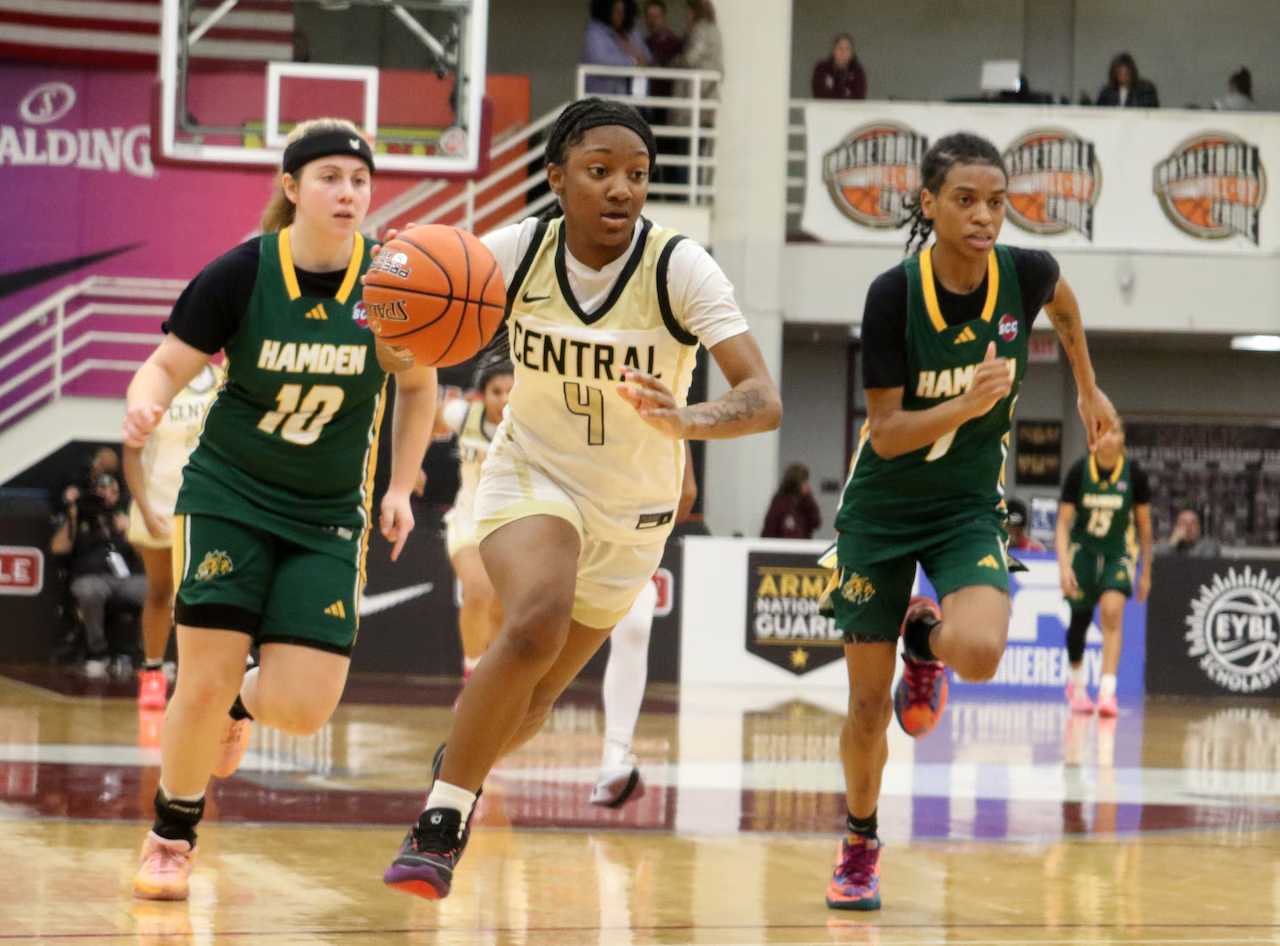The chance to oust President Trump or support him in the 2020 general election will bring voters to the polls. But what happens once they get past that first contest on the ballot?
Next year’s election will be different from those in our lifetime for one sobering reason: local newspapers, which historically have shouldered the brunt of media responsibility to inform our electorate, either have closed up shop or cut so much staff that few reporters remain to do the job.
Nearly one in five newspapers—almost 1,800—closed in the last 15 years, according to research from the University of North Carolina. Far more have decimated their newsroom staff to survive, with the Pew Research Center reporting that 32,000 newspaper journalists left between 2008 and 2018, either because of layoffs or buyouts.
Those who remain face a daunting task covering daily news, much less the added work of local election coverage. Yet this is coverage, I’d argue, that is every bit as essential to our democracy as national and statewide political coverage.
Voters will pick the officials who make decisions that affect our schools and garbage rates and fire protection and local tax rates. Decisions that shape our communities and protect our quality of life. Anyone who’s faced a blank ballot knows it’s virtually impossible to cast an informed vote without strong local reporting. In 2020, without creative approaches by lean newsrooms, voters will be forced to hunt down information themselves, forced to rely upon paid political advertising, and the self-promotion on campaign websites to figure out how to vote.
But the workload challenge to newsrooms is real. In Sacramento County, for instance, 24 City Council and administrative positions are in front of voters next year. Nineteen Superior Court judges. Eight county board and administrative officials. Forty-one K-12 school board officials. Dozens and dozens of board members for many of the 100-plus special districts that handle everything from fire protection to flood control. All matter enough to warrant public scrutiny and considered attention to candidate qualifications.
And that’s just one county. The Sacramento Bee historically covered a four-county metro area, with detailed reporting in each.
Even 20-plus years ago, when The Sacramento Bee was at its staffing heyday, the newsroom couldn’t cover every race as closely as we wanted. But we came close. I was city editor in the 1990s and ran our local election coverage. We doled out races across the newsroom and staffed a meaty operation on election night.
By the 2016 general election—my last at The Bee—we instead focused on races of the greatest local interest. Continued heavy staffing cuts since I left could mean even spottier coverage in 2020, and a ballot filled with candidates who remain mysteries to most voters.
Researchers from Cleveland State University and the University of Texas at Austin found it’s not just voters who are affected by declining local news coverage. In 11 California cities including Sacramento, they found reduced coverage tied to a startling decline in people running for local office.
So it’s imperative newsrooms change strategy in 2020, starting with a collaborative approach that puts the community first and leaves behind traditional competitive concerns. Partnerships are the only way for diminished newsrooms to continue to ensure their communities are informed. They could be an opportunity for newspapers to enhance their traditional community leadership roles.
The SF Homeless Project in San Francisco could be the model for 2020 local election coverage. For four years, The San Francisco Chronicle has led a consortium of dozens of Bay Area newsrooms that united to provide deep coverage of severe and chronic homelessness. Their work is community service at its best.
Would it work for election coverage? A broad media collaboration might allow more experienced reporters the time to keep readers abreast of campaign donations that portend conflict of interests or find time to chase down tips of corruption. It could support local reporting that gives readers a deep look at the decisions and actions of current sitting politicians. It could support events such as political debates.
In Sacramento, there’s a framework for collaboration already in place. The Bee, local public radio, universities, and several television stations have collaborated for decades to sponsor political debates at the state and local levels. A broader collaboration would extend that value.
Newspapers historically have used their institutional influence to endorse candidates as well, a time-intensive commitment that becomes almost impossible with a reduced staff. It’s time to learn from some small newspapers that have invited community members to join their editorial discussions, sometimes sitting on the board for a year or more. A careful selection of community leaders who represent different views and who are not politically active might help editorial boards provide useful endorsements.
The historic newspaper role is as broken as its business model. But local newspapers still have an essential community leadership role to play. It’s not hyperbole to say our democracy is at stake.
At a time of unprecedented polarization and partisanship, Nieman Reports is publishing a series of articles exploring how the crisis in local journalism is impacting communities in the run-up to the 2020 presidential election. Read all of the articles in the Election ’20: The Role of Local News series here.
Next year’s election will be different from those in our lifetime for one sobering reason: local newspapers, which historically have shouldered the brunt of media responsibility to inform our electorate, either have closed up shop or cut so much staff that few reporters remain to do the job.
Nearly one in five newspapers—almost 1,800—closed in the last 15 years, according to research from the University of North Carolina. Far more have decimated their newsroom staff to survive, with the Pew Research Center reporting that 32,000 newspaper journalists left between 2008 and 2018, either because of layoffs or buyouts.
Those who remain face a daunting task covering daily news, much less the added work of local election coverage. Yet this is coverage, I’d argue, that is every bit as essential to our democracy as national and statewide political coverage.
Voters will pick the officials who make decisions that affect our schools and garbage rates and fire protection and local tax rates. Decisions that shape our communities and protect our quality of life. Anyone who’s faced a blank ballot knows it’s virtually impossible to cast an informed vote without strong local reporting. In 2020, without creative approaches by lean newsrooms, voters will be forced to hunt down information themselves, forced to rely upon paid political advertising, and the self-promotion on campaign websites to figure out how to vote.
But the workload challenge to newsrooms is real. In Sacramento County, for instance, 24 City Council and administrative positions are in front of voters next year. Nineteen Superior Court judges. Eight county board and administrative officials. Forty-one K-12 school board officials. Dozens and dozens of board members for many of the 100-plus special districts that handle everything from fire protection to flood control. All matter enough to warrant public scrutiny and considered attention to candidate qualifications.
And that’s just one county. The Sacramento Bee historically covered a four-county metro area, with detailed reporting in each.
Even 20-plus years ago, when The Sacramento Bee was at its staffing heyday, the newsroom couldn’t cover every race as closely as we wanted. But we came close. I was city editor in the 1990s and ran our local election coverage. We doled out races across the newsroom and staffed a meaty operation on election night.
By the 2016 general election—my last at The Bee—we instead focused on races of the greatest local interest. Continued heavy staffing cuts since I left could mean even spottier coverage in 2020, and a ballot filled with candidates who remain mysteries to most voters.
Researchers from Cleveland State University and the University of Texas at Austin found it’s not just voters who are affected by declining local news coverage. In 11 California cities including Sacramento, they found reduced coverage tied to a startling decline in people running for local office.
So it’s imperative newsrooms change strategy in 2020, starting with a collaborative approach that puts the community first and leaves behind traditional competitive concerns. Partnerships are the only way for diminished newsrooms to continue to ensure their communities are informed. They could be an opportunity for newspapers to enhance their traditional community leadership roles.
The SF Homeless Project in San Francisco could be the model for 2020 local election coverage. For four years, The San Francisco Chronicle has led a consortium of dozens of Bay Area newsrooms that united to provide deep coverage of severe and chronic homelessness. Their work is community service at its best.
Would it work for election coverage? A broad media collaboration might allow more experienced reporters the time to keep readers abreast of campaign donations that portend conflict of interests or find time to chase down tips of corruption. It could support local reporting that gives readers a deep look at the decisions and actions of current sitting politicians. It could support events such as political debates.
In Sacramento, there’s a framework for collaboration already in place. The Bee, local public radio, universities, and several television stations have collaborated for decades to sponsor political debates at the state and local levels. A broader collaboration would extend that value.
Newspapers historically have used their institutional influence to endorse candidates as well, a time-intensive commitment that becomes almost impossible with a reduced staff. It’s time to learn from some small newspapers that have invited community members to join their editorial discussions, sometimes sitting on the board for a year or more. A careful selection of community leaders who represent different views and who are not politically active might help editorial boards provide useful endorsements.
The historic newspaper role is as broken as its business model. But local newspapers still have an essential community leadership role to play. It’s not hyperbole to say our democracy is at stake.
At a time of unprecedented polarization and partisanship, Nieman Reports is publishing a series of articles exploring how the crisis in local journalism is impacting communities in the run-up to the 2020 presidential election. Read all of the articles in the Election ’20: The Role of Local News series here.



